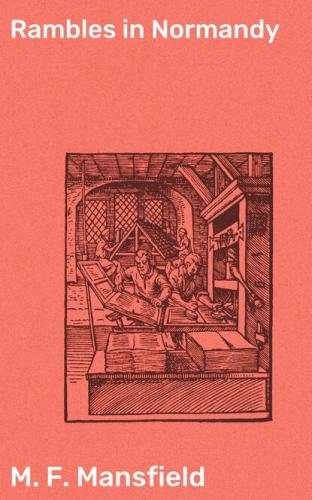Besides these, there are other enigmatical symbols and signs erected by paternal societies of road users which will strike a stranger dumb with conjecture as to what they may mean.
They are all essentially practical, however, as the following tableau will show. It is very important indeed for an automobilist or other road user to know that a railway-gate (like enough to be shut) awaits him around a sharp curve, or that a steep hill is hidden just behind a bank of trees.
Still another class of signs met with by road users in France is most helpful. They, too, shoot out a warning which one may read as he rushes by at high speed; printed in great staring letters, one, two, or three words which one dare not, if he values his life, ignore.
Truly one who goes astray or contravenes any law of the road in France has only himself to blame.
The chief national roads crossing Normandy are as follows:
| No. | 192 and | —Paris to Havre, by the right bank of the Seine, passing Poissy, Melun, La Roche-Guyon, Les Andelys, and Rouen. |
| " | 14. | |
| " | 190. | —Paris to Rouen and Honfleur, by the left bank of the Seine. |
| " | 182. | |
| " | 180. | |
| " | 13. | —Paris to Cherbourg, via Evreux and Caen. |
| " | 26. | —Paris to Fécamp by Yvetot. |
| " | 14. | —Paris to Dieppe. |
| " | 14, | —bis. Paris to Tréport. |
| " | 155. | —Paris to St. Malo, via Mayenne. |
| " | 24, | —bis.Paris to Granville by Verneuil. |
| " | 13. and | —Paris to Coutances by Bayeux and St. Lô. |
| " | 172. | |
| " | 10. | —Paris to Vannes, via Ploërmel. |
| " | 12. | |
| " | 24. | |
| " | 166. | |
| " | 10. | —Paris to Quimper, via Rennes and Lorient. |
| " | 12. | |
| " | 24. | |
| " | 165. | |
| " | 10. | —Paris to Brest, via Versailles, Alençon, |
| " | 12. | —Laval, Rennes, and St. Brieuc. |
| " | 10. | —Paris to Nantes and Paimbœuf, via Versailles, Chartres, Le Mans, Angers, and Nantes. |
| " | 23. |
After the fall of the Roman Empire the magnificent roadways which threaded Gaul in every direction all but disappeared, and for a time the horse was employed only with the saddle, the more or less indolent nobles travelling mostly by vehicles drawn by oxen.
By the middle ages the horse had come to be admired as a noble animal by virtue of his usefulness in war; but the routes of communication were hardly more than simple tracks and by no means replaced the great rivers, which Pascal had called “ces chemins qui marchent.” Indeed the “coches d’eau” had not entirely disappeared from the waterways of France until 1830.
The first carriages at all approaching the modern fashion were imported from Italy in the sixteenth century, doubtless by the Medicis. In 1550 there were three, only, in Paris, but under Louis XIV. the roads became more carefully guarded and increased greatly in number.
The great carrosses and calèches of the early days were ponderous affairs, a calèche known as a litière, the precursor of the modern sleeping-car, it would seem, having a weight of 2,500 kilos.
The following lines well describe it:
“C’est un embarras étrange,
Qu’un grand carrosse dans la fange,
C’est presque un village roulant. …”
Under Louis XV. the carrosse became lighter and the chaise on two wheels came in. Then followed cabriolets, berlines, and the poste-chaise, and finally the malle-poste and the diligence.
The most familiar of all, to those of a few generations ago, and to readers of travel literature, is the diligence.
These great carriages apparently had a most respectable lease of life, many having been in service for a great many years. To-day they have mostly disappeared, and in Normandy and Brittany practically exist not at all, so far as the tourist traveller is concerned, though once and again they
